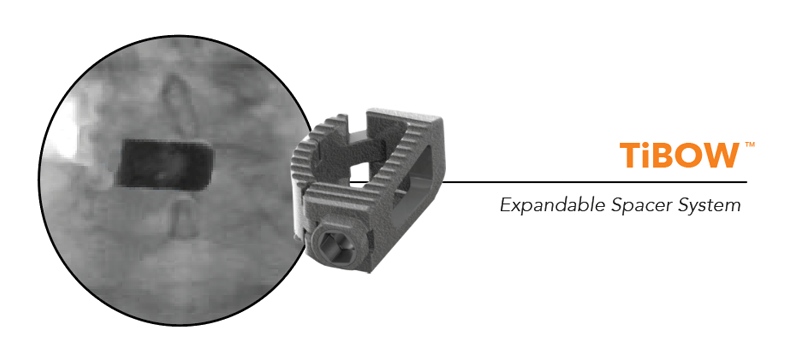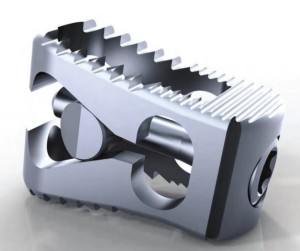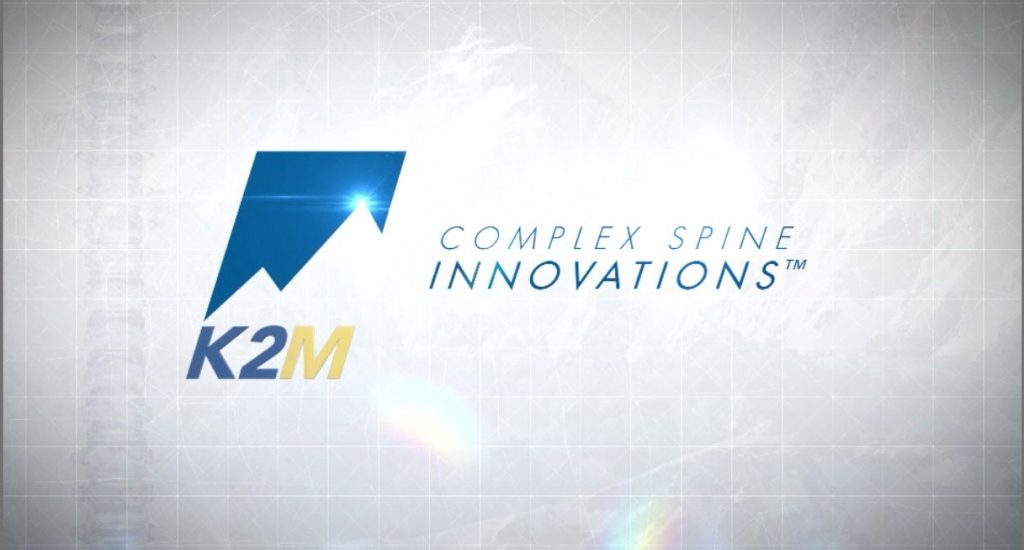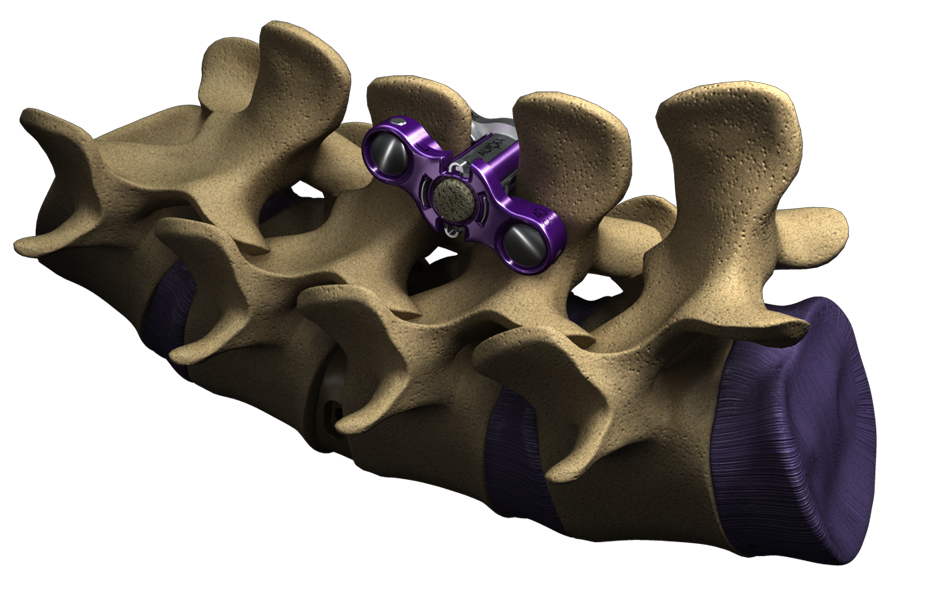BELGRADE, Mont., Aug. 09, 2017 (GLOBE NEWSWIRE) — Xtant Medical Holdings, Inc. (NYSE American:XTNT), a leader in the development of regenerative medicine products and medical devices, today announced that the U.S. Food and Drug Administration (FDA) has cleared product line extensions for the Calix-C family of cervical interbody cages. The clearance provides for the addition of two larger footprints and importantly, for use with allograft. This clearance strengthens Xtant Medical’s focus in regenerative technologies, providing a more comprehensive. integrated cervical treatment option for surgeons and their patients.
In Xtant’s continued effort to combine our hardware and biologics products to provide total solutions for our customers, the Calix-C indication now includes use with allograft comprised of cancellous and/or corticocancellous bone graft in addition to the current use with autograft. Xtant Medical’s 3Demin and patented OsteoSponge technology are ideal allografts to use with Calix-C due to their ability to compress, fill and expand within the interbody’s graft chamber, allowing for ideal bone contact with the vertebral plates and fusion. OsteoVive, a cellular allograft, can also be used in conjunction with Calix-C. The additional, larger footprints of Calix-C are designed for increased stability against the vertebral endplates, and allow for a larger lumen for bone graft, making it a better surgical option for a greater number of patients. The addition of the allograft indication and the larger sizes will all be available in PEEK and Titanium plasma coated PEEK.
“This new FDA clearance allows Xtant Medical to leverage the clinical effectiveness of our established allograft product offerings for use with our now expanded line of interbody devices in cervical discectomy and fusion procedures” stated Dr. Gregory Juda, CSO and GM of Xtant Medical. “We expect that the use of these products as a combined spinal fusion solution will result in positive patient outcomes.”
The Calix‐C™ Cervical Interbody Spacer is intended for spinal fusion procedures at one level (C2 – T1 inclusive) in skeletally mature patients and is intended to be used with supplemental spinal fixation systems such as Xtant Medical’s Spider Cervical Plating and Certex Spinal Fixation Systems.
Xtant Medical estimates the worldwide market for cervical fusion devices at $1.3B and growing. The worldwide market for Demineralized Bone Matrix (DBM) is estimated at $485M. The Company has initiated collaborative marketing efforts for the current Calix-C offering with the surgeon’s preferred Xtant Medical allograft, and is preparing for the alpha launch of the new Calix-C sizes later this year.
About Xtant Medical
Xtant Medical Holdings, Inc. (NYSE American:XTNT) develops, manufactures and markets class-leading regenerative medicine products and medical devices for domestic and international markets. Xtant products serve the specialized needs of orthopedic and neurological surgeons, including orthobiologics for the promotion of bone healing, implants and instrumentation for the treatment of spinal disease, tissue grafts for the treatment of orthopedic disorders, and biologics to promote healing following cranial, and foot and ankle surgeries. With core competencies in both biologic and non-biologic surgical technologies, Xtant can leverage its resources to successfully compete in global neurological and orthopedic surgery markets. For further information, please visit www.xtantmedical.com.
Important Cautions Regarding Forward-looking Statements
This press release contains certain disclosures that may be deemed forward-looking statements within the meaning of the Private Securities Litigation Reform Act of 1995 that are subject to significant risks and uncertainties. Forward-looking statements include statements that are predictive in nature, that depend upon or refer to future events or conditions, or that include words such as “continue,” “efforts,” “expects,” “anticipates,” “intends,” “plans,” “believes,” “estimates,” “projects,” “forecasts,” “strategy,” “will,” “goal,” “target,” “prospects,” “potential,” “optimistic,” “confident,” “likely,” “probable” or similar expressions or the negative thereof. Statements of historical fact also may be deemed to be forward-looking statements. We caution that these statements by their nature involve risks and uncertainties, and actual results may differ materially depending on a variety of important factors, including, among others: the ability to comply with covenants in the Company’s senior credit facility and to make deferred interest payments; the ability to maintain sufficient liquidity to fund operations; the ability to remain listed on the NYSE MKT; the ability to obtain financing on reasonable terms; the ability to increase revenue; the ability to continue as a going concern; the ability to maintain sufficient liquidity to fund operations; the ability to achieve expected results; the ability to remain competitive; government regulations; the ability to innovate and develop new products; the ability to obtain donor cadavers for products; the ability to engage and retain qualified technical personnel and members of the Company’s management team; the availability of Company facilities; government and third-party coverage and reimbursement for Company products; the ability to obtain regulatory approvals; the ability to successfully integrate recent and future business combinations or acquisitions; the ability to use net operating loss carry-forwards to offset future taxable income; the ability to deduct all or a portion of the interest payments on the notes for U.S. federal income tax purposes; the ability to service Company debt; product liability claims and other litigation to which we may be subjected; product recalls and defects; timing and results of clinical studies; the ability to obtain and protect Company intellectual property and proprietary rights; infringement and ownership of intellectual property; the ability to remain accredited with the American Association of Tissue Banks; influence by Company management; the ability to pay dividends; and the ability to issue preferred stock; and other factors.
Additional risk factors are listed in the Company’s Annual Report on Form 10-K and Quarterly Reports on Form 10-Q under the heading “Risk Factors.” The Company undertakes no obligation to release publicly any revisions to any forward-looking statements to reflect events or circumstances after the date hereof or to reflect the occurrence of unanticipated events, except as required by law.
Investor Contact CG CAPITAL Rich Cockrell 877.889.1972 investorrelations@cg.capital Company Contact Xtant Medical Molly Mason mmason@xtantmedical.com









